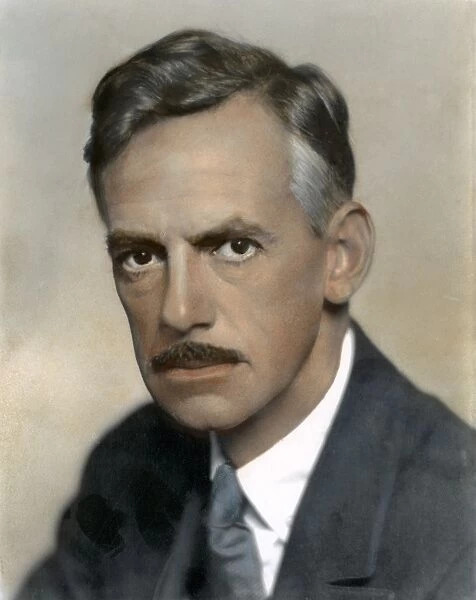 Español
Español
August 4, 2024
by Fredric Dannen
This is the final article in a three-part series about American playwright and Nobel laureate Eugene O'Neill. The first two articles appeared in Lokkal in August 2017, and can be read here:
The Rise and Fall and Rise of Eugene O'Neill
The Sorrows of Young Eugene
On December 30, or possibly New Year's Eve, 1911, Eugene O'Neill, age 23, went up to his shabby $3-a-month room at Jimmy-the-Priest's—a saloon and flophouse on the New York City waterfront—with the intention of taking his life. The son of a famous stage actor, O'Neill had no talent for acting himself and had not yet discovered his gift for writing. He had reason to be depressed. His difficult birth had left his mother a drug addict, thanks to a quack doctor who got her hooked on morphine. His father, a man of some means, was an irrational miser – hence the cheap doctor. His older brother, once full of promise, was on his way to drinking himself to death.
O'Neill locked the door to his room with a flimsy hook, swallowed a fistful of veronal tablets, a barbiturate, curled up in bed, and waited to die. After many hours, two other tenants at the flophouse forced the door open and took him to Manhattan's Bellevue Hospital, where his stomach was pumped. Within a few months, he was convalescing at his father's modest summer cottage in Connecticut, where he learned he had tuberculosis, frequently fatal in those days, and needed to go to a sanatorium. O'Neill emerged from the ordeal with a desire to live, and a resolve to become a playwright.
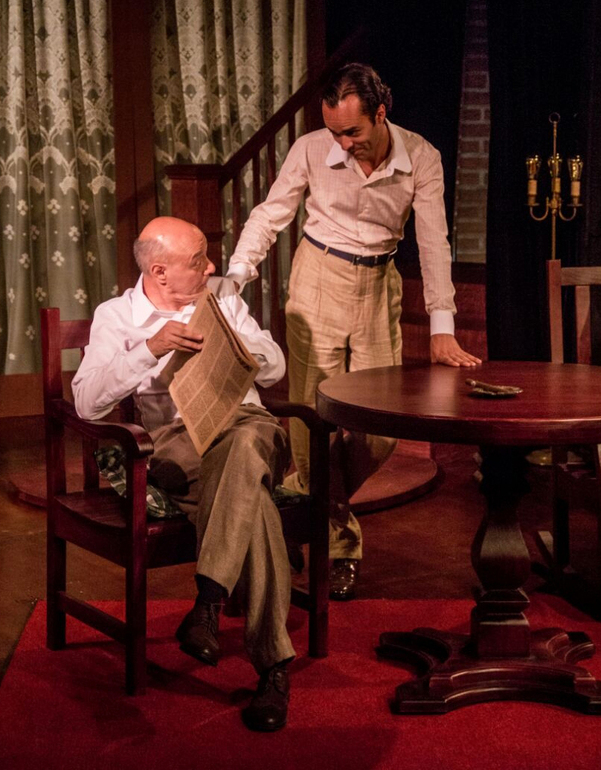
Three decades after his suicide attempt, the family disfunction that had helped fuel his depression became the subject of O'Neill's autobiographical play Long Day's Journey Into Night, which takes place over a single summer day, from 8 in the morning to midnight, at his father's Connecticut cottage. It is widely considered O'Neill's supreme achievement, and frequently ranked as the greatest American play ever written.
In early 2017, when Marcela Brondo and I created La Troupe México, the only dedicated bilingual theater company ever founded in San Miguel, and one of the few in Latin America, we resolved to launch the company with something ambitious. We settled on Long Day's Journey Into Night, to be performed in Spanish with English supertitles. It was performed over two weeks in August 2017, at the San Miguel Playhouse, and was a great success.

Recently, I came across a folder on an external hard drive, containing 78 high-quality videos, ranging from 18 minutes to a few seconds in length, comprising the complete three-hour presentation of Long Day's Journey on August 25, 2017. There were about an hour and a half of closeups. I had simply forgotten these videos existed. I have managed to edit all the components into a fluid movie of the entire play, with subtitles in English. The movie is now available on YouTube. I encourage everyone who wants to see it to do so, and to select the option of viewing it in HD mode:
Watch
When we announced our intention to produce O'Neill's masterpiece in Spanish, a lot of people told Marcela and me that it was a mad endeavor. The late Jim Newell, founder and creative director of the San Miguel Playhouse in Col. Independencia, thought otherwise, and warmly welcomed us to present Long Day's Journey in his theater. As we soon learned, the play had special significance for Jim – it was the subject of his doctoral dissertation in theater arts. Jim loved our production, and invited Marcela and me to join the Playhouse board. He died just over two years ago, and today Marcela is board president.
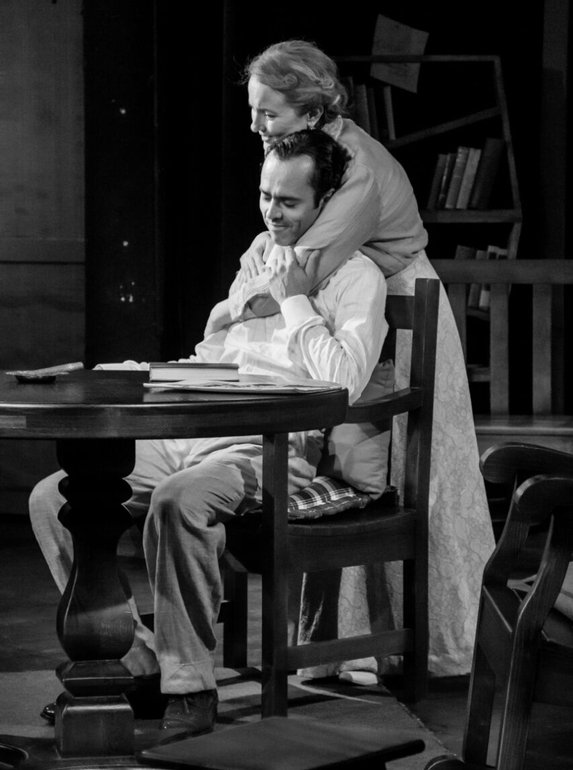
The theater Jim built opened its doors on October 14, 2014, with a production of Moonlight and Magnolias, and went on to host about a 120 other productions – plays, concerts, Christmas pageants, a children's opera, and so forth – some with runs of two weeks, others that were one-offs. The theater closed in May of last year, when the owner of the building put the structure up for sale. Marcela formed a partnership with a highly cultured Mexican family, and through her efforts we were offered a lease on one of their properties, a never-occupied building on Boulevard de la Conspiración, across from the Tuesday Market. (The family turned down a more lucrative offer for the building to become another Oxxo store in favor of it becoming a theater.)
Below is a photograph of the exterior of the building as it appears today, and an artist's rendering of new Playhouse as we envision it.

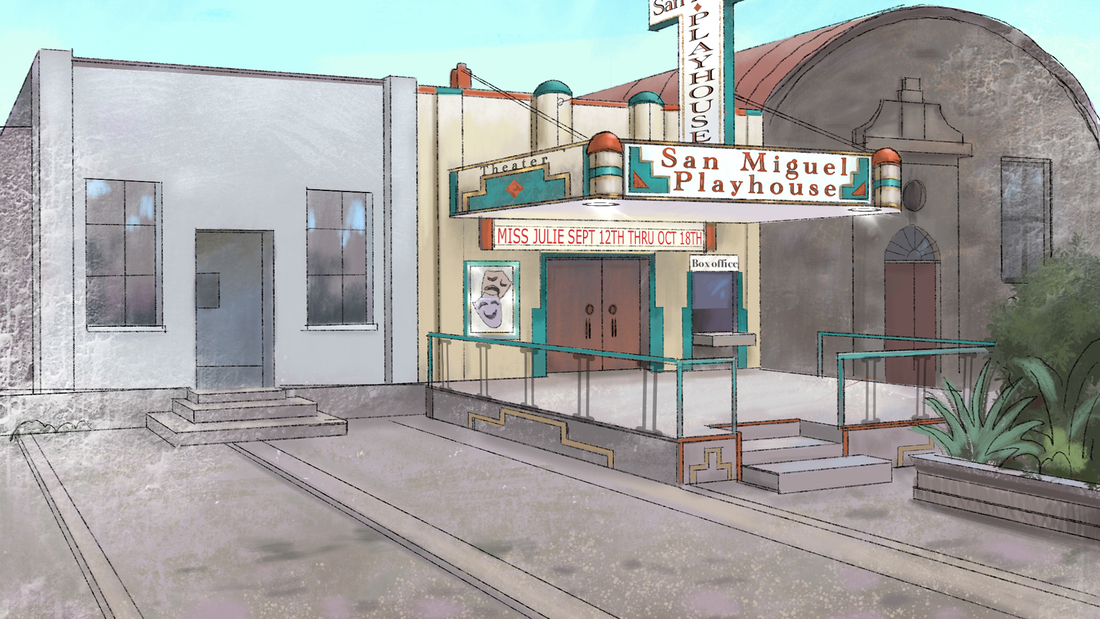
Jim's mission was to create a theater for the community, a stage for our own productions and for any other reputable theater company, musician or ensemble that wished to rent the space. That remains our mission for the new playhouse. Though we own nearly the entire interior of the original theater – seats, curtains, lights – we need donations to help us construct the interior of the new space. The dimensions of the new building are quite different from the old one. We are working with an acoustic engineer, not only to make the building soundproof, but to have ideal acoustics for live theater and chamber music. The lights we have are mostly Fresnels from the last century, and they need to be replaced with modern LED lighting. In short, the cost of making the new San Miguel Playhouse all we want it to be is not inconsiderable. Our goal is to have the theater up and running by first quarter 2025.
I will have a good deal more to say about the new San Miguel Playhouse, and on our progress with the construction, in subsequent editions of Lokkal. In the meantime, we will be grateful for any donations, large or small, which can be made through the San Miguel Community Foundation, a 501(c)(3) charitable foundation authorized to give tax receipts. Please use this link:
Donations
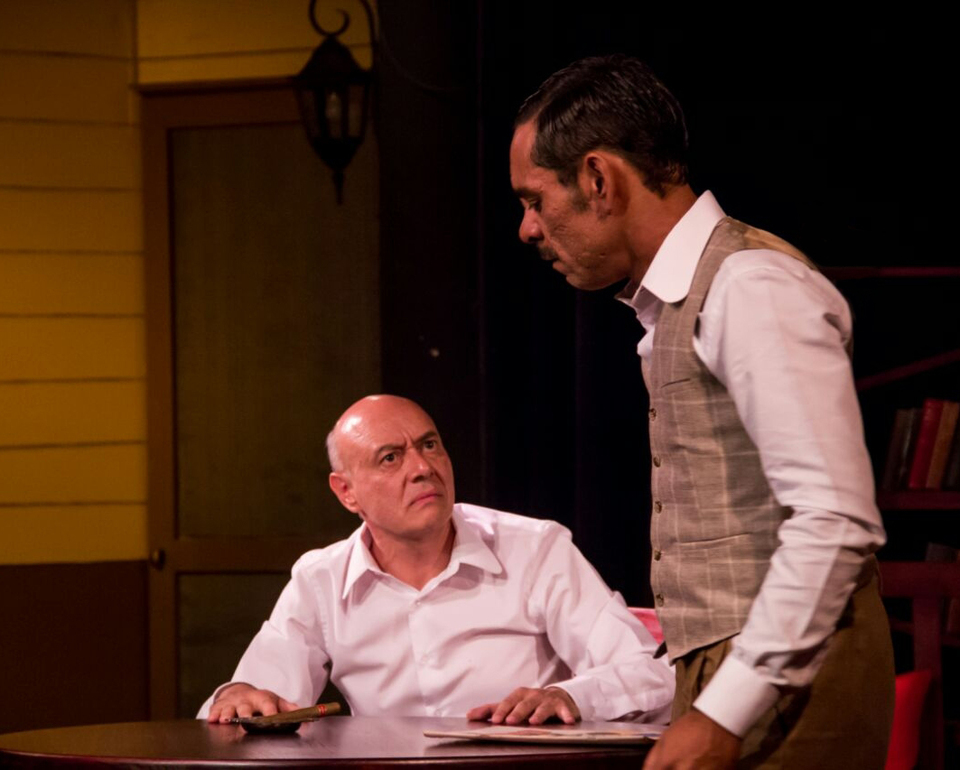
I have been something of an O'Neill fanatic since college, and it is surprising to me how many educated people I have encountered who say they never heard of him. He was the second American-born writer to win the Nobel Prize for literature, after Sinclair Lewis, who also deserves to be better known today– his novel Elmer Gantry, about phony piety, has never seemed more relevant. Only seven other American-born writers subsequently got the prize, among them Bob Dylan, a decision that some people greeted with incredulity. Truth be told, many questions can be raised about the Nobel for literature, which was established in 1901 – Leo Tolstoy, Virginia Woolf, James Joyce and Marcel Proust never won it, but William Golding did. The real downside to a prestigious literary award is that it can leave its recipient terrified of writing again. "This is the end of me," Sinclair Lewis said, after winning the Nobel in 1930. "I cannot live up to it." He never did. Lewis published eleven more novels, nearly all mediocre.
What is so remarkable about O'Neill is that after he was awarded the Nobel in 1937, he wrote his two greatest plays, The Iceman Cometh (1939) and Long Day's Journey Into Night (1939-1941). He also wrote three other masterworks, A Moon for the Misbegotten (1941-1943), Touch of the Poet (1942), and the one-act, two-character gem Hughie (1941). He had won the prize largely on the strength of experimental and expressionist plays such as Strange Interlude, The Hairy Ape and The Emperor Jones, but the plays of his final period were all works of naturalism, a style in which O'Neill ultimately found his strongest voice. Perhaps winning the Nobel had liberated rather than intimidated him; if so, he stands as a great exception.
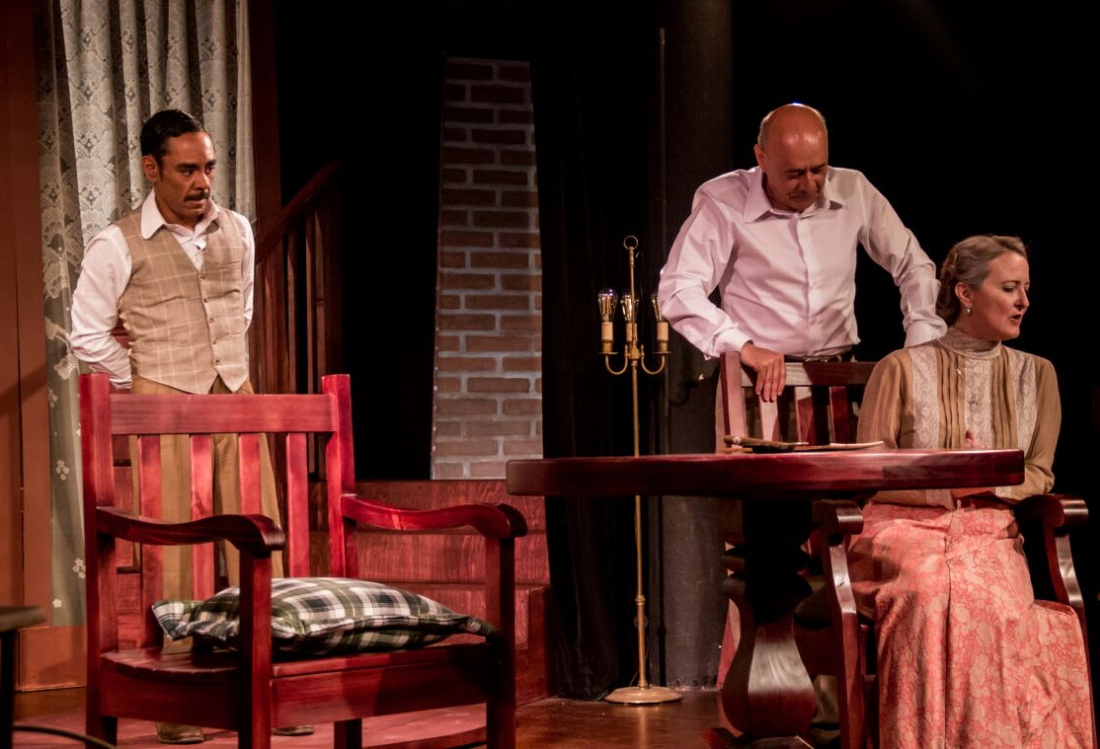
Theater enthusiasts and book lovers should know and appreciate O'Neill not because of his awards (he also won four Pulitzers), but because he revolutionized American drama. Before O'Neill, American theater was virtually all farce and melodrama – a prime example being Monte Cristo, a piece of romantic folderol adapted from Dumas' novel, in which James O'Neill, Eugene's father, made his fortune. As Gore Vidal put it, American theater before O'Neill was "a wasteland...two centuries of junk."
Credit must also be given to the wife and husband team of Susan Glaspell and George Cram Cook, who founded the Provincetown Players on Cape Cod in 1915, the first modern American theater company, and produced some of O'Neill's earliest plays. In addition, Glaspell, in 1916, wrote Trifles, a pioneering feminist play in one act that also happens to be a gripping piece of theater. If O'Neill's name should be more familiar to the general public than it is today, that goes double for Susan Glaspell. There will be a production of Trifles at the future San Miguel Playhouse if I have anything to say about it.

Great plays never lose their relevance; if they do, they weren't great in the first place. Oscar Wilde's A Woman of No Importance may have seemed edgy when it was first produced in 1893, but today it is drearily dated and scarcely worth reviving. Henrik Ibsen's The Wild Duck debuted the following year and has not aged a day since. I have little patience for directors who believe they have to "modernize" a great play to make it more relevant to a contemporary audience. The public health crisis over the water supply in Flint, Michigan, ten years ago led numerous theater companies to present Ibsen's An Enemy of the People, a play about the backlash faced by a medical officer who discovers that the public baths are contaminated. Smarter companies did the play as Ibsen wrote it and let audiences make the connection; less astute companies saw the need to update it.

I was particularly unimpressed with a recent post-pandemic rendering of Long Day's Journey Into Night, produced by Audible, a division of Amazon, at the Minetta Lane Theatre in downtown New York City in January 2022. I have listened to the radio-play version available on Audible. O'Neill's drama is slashed down to under two hours and set in the present. Edmund Tyrone, the character O'Neill based on himself, suffers from Covid rather than tuberculosis, and his mother, Mary Tyrone, is addicted to opioids instead of morphine – "From a 24-hour pharmacy with drive-through pickup, no doubt," wrote a less-than-enthusiastic reviewer for the Washington Post. Despite some decent acting, it is a misfire, and a disservice to anyone encountering the play for the first time.
When Marcela Brondo and I settled on Long Day's Journey as our first full production for La Troupe México, there was never any question that, although acted in Spanish, we would keep the play as O'Neill wrote it – a day in the life of an Irish American family in Connecticut in 1912. People who saw our production, or who watch the video, may judge for themselves, but I maintain it is a first-rate effort, with a splendid cast.
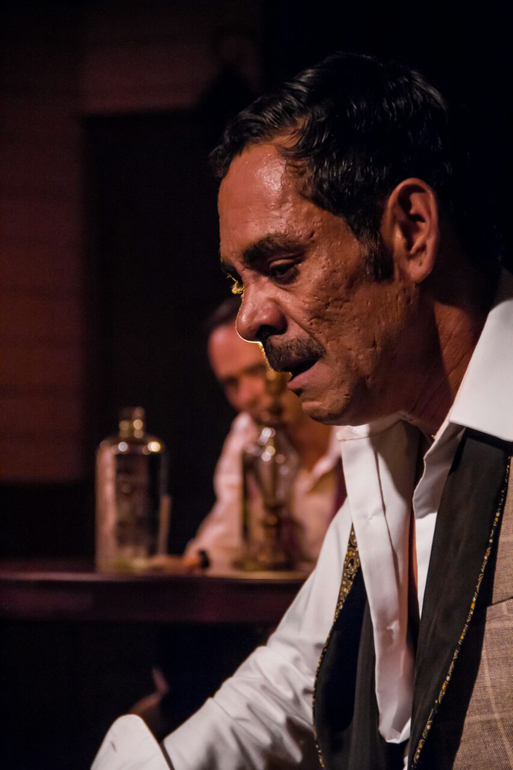
Julián Tabche, from Mexico City, directed the play and enacted James Tyrone, the family patriarch – a huge burden that he took on with trepidation but handled with great skill. He asked Marcela to serve as assistant director, and her contributions were significant. Venezuelan-born Christian Baumgartner played Jamie Tyrone, the doomed elder brother, and his agility as an acrobat proved useful in his extended, highly physical drunk scene in the last act. Rodrigo Demian, a San Miguel resident from Mexico City, was affecting as Edmund Tyrone, and his poetic soliloquy about his experiences at sea was one of the high spots in the production. Mexican-born Ivette Socorro, in the role of the Tyrone's servant Cathleen, lifted every scene she was in.
I particularly want to single out Tanya Huntington, who enacted the morphine-addicted mother, Mary Tyrone. Born in South Dakota, Tanya has a PhD in Latin American literature, and played her role in impeccable Spanish. Mary Tyrone, along with Ophelia in Hamlet and Nina in The Seagull – two other characters who descend into derangement – has to be one of the most difficult female roles in the theater. Too many actresses transform Mary's part into one extended mad scene, which rarely works out well. She is a woman steadily slipping into a drug-induced dream state, with occasional outbursts of anger – and this is exactly how Tanya portrayed her. I find her a pleasure to watch.
The film is dedicated to Jim Newell.
**************

Fredric Dannen is a journalist and author with a specialty in criminal justice. He has been a staff writer for the New Yorker and Vanity Fair.
In 1990, Hit Men, his book about the American music industry and the influence of organized crime, spent a month on the New York Times bestseller list. The book is #2 on Billboard's list of 100 Greatest Music Books of All Time. One of his Vanity Fair articles prompted the Sixth Circuit Court of Appeals to rebuke the U.S. Justice Dept. for fraudulently withholding exculpatory evidence in the case of Cleveland auto worker John Demjanjuk, who was extradited, wrongly convicted, and sentenced to hang in Israel as the Nazi war-criminal "Ivan the Terrible." He secured the only interview given by Los Angeles police chief Daryl Gates on the heels of the infamous Rodney King beating, and the only interview ever given by crime boss Lorenzo Nichols, the crack kingpin of New York City.
While conducting research for a forthcoming book, Dannen uncovered lost evidence in the case of Calvin Washington, a Texan wrongly convicted of homicide. As the direct result of Dannen's efforts, Calvin Washington won a full pardon for innocence, the first ever granted by Texas governor Rick Perry under the state's DNA statute.
**************
*****
Please contribute to Lokkal,
SMA's online collective:
 ***
***
Discover Lokkal:
Watch the two-minute video below.
Then, just below that, scroll down SMA's Community Wall.
Mission

Visit SMA's Social Network
Contact / Contactar

